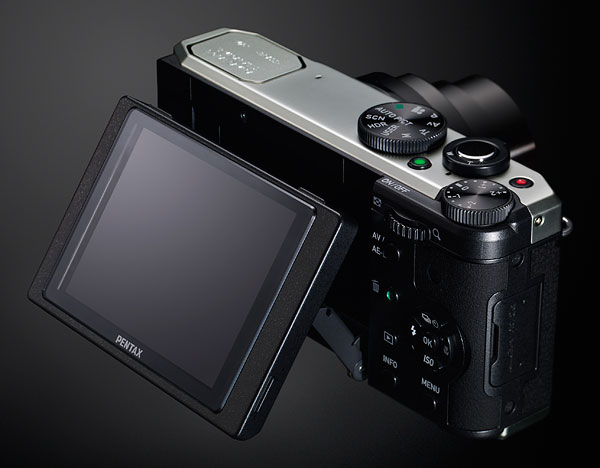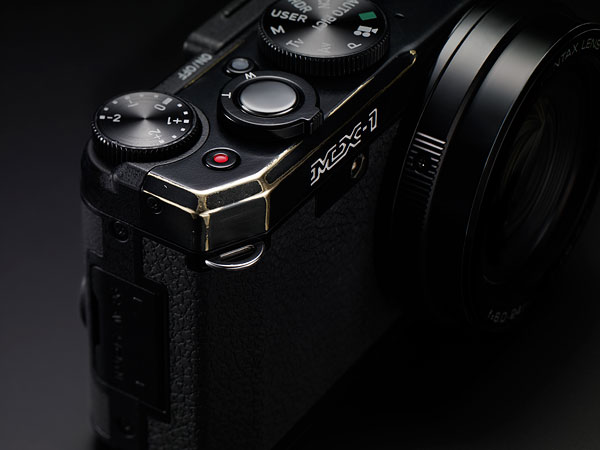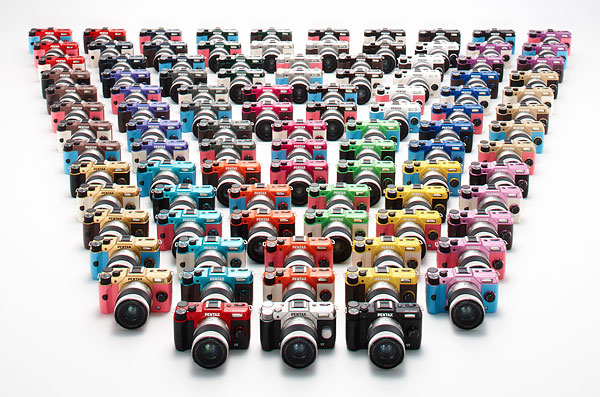Pentax announces MX-1 enthusiast compact, more Q10 color choices; previews upcoming mid-range flash strobe
posted Monday, January 7, 2013 at 9:01 AM EST

Pentax's first fixed-lens enthusiast model.
Until now, there's been a clear differentiation in Pentax's camera lineup. Between its various mirrorless, SLR, and medium-format models, the company provides quite a few options for experienced shooters and those looking for room to grow. Its fixed-lens models, meanwhile, are aimed at consumers who want to keep things simple and affordable. With the debut of the Pentax MX-1, that line is blurred: Pentaxians can now aspire to a camera that fills the middle ground between simple compacts and feature-rich ILCs. The MX-1 should appeal both to photographers looking for a second camera to complement their SLR, and those in search of a step-up camera , but who don't want to deal with an interchangeable lens design.

If the name sounds familiar, that's no accident: it pays homage to the Pentax MX film camera line, dating from the late 1970s to the early 1980s. And while it might not have that much in common with the interchangeable-lens MX of days gone by, the Pentax MX-1 eschews modern styling trends in favor of a similarly clean, timeless aesthetic. Its vintage camera feeling will only be enhanced once a little of the paint wears away -- just as it did on the film cameras we knew and loved -- revealing a hint of the rugged, solid brass plates that line the MX-1's top and bottom decks.

And the enthusiast-friendly design extends beyond mere styling. On the front, there's a bright 4x zoom lens that looks very much the same as that shared by the Olympus XZ-1 and XZ-2 -- and here's hoping it is the same optic, because it's one we praised for its excellent corner-to-corner sharpness. There's also that hallmark of the enthusiast-class camera, a 1/1.7-inch image sensor, with a resolution of twelve megapixels. On the top deck sits a dedicated exposure compensation dial, a nice touch that will likewise appeal to Pentax's target customer. And of course, there are plenty of other features aimed at enthusiasts, including fully manual shooting, a DNG raw file format option, sensor-shift shake reduction, dual remote control receivers, and more.
Available from February 2013, the Pentax MX-1 also hits the same price point as many of its enthusiast-camera peers, listing at around US$500. For more on this interesting model, take a look at our hands-on Pentax MX-1 preview.

New Q10 body customization.
Alongside the launch of the MX-1, Pentax USA has also revealed that it will now allow its customers to order custom-made versions of the Pentax Q10 mirrorless camera. In its home market, Pentax Japan has offered a similar service for several years now on cameras including the K-x, K-r and K-30 digital SLRs, and the original Pentax Q mirrorless, but in the past the US division has preselected only a handful of these color combinations to offer stateside.

Now, you'll be able to select one of twenty base body colors and five handgrip colors, allowing a total of 100 possible color combinations ranging from the subtle to the jarring. The color combination can be selected using a tool on the Pentax USA website, or through retail partner Adorama. Since the camera will need to be custom-made to your specification and then shipped to the USA, it's expected to take around four or five weeks to get your hands on the finished product.
More details can be found in our Pentax Q10 preview.
New flash concept.
Pentax will also be showing one future product concept at CES. Tentatively named the Pentax AF 360 FGZ II, it's a new mid-range flash strobe set to launch some time this year. With a guide number of 118.8 feet (36m) at ISO 100, it has the same output as the existing AF 360 FGZ, but where the earlier model had only a bounce head, the new variant will provide both bounce and swivel functions.
